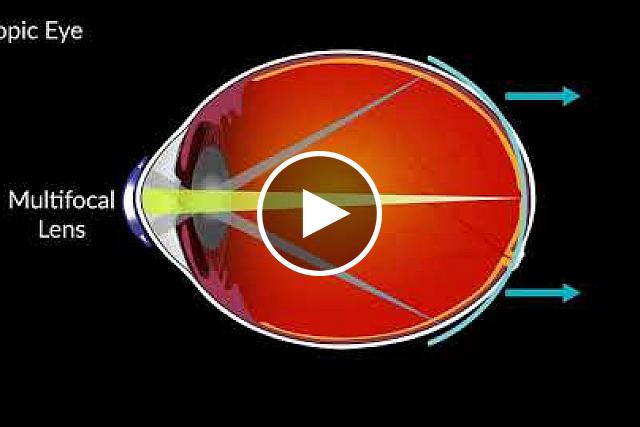You are here
August 18, 2020
Multifocal contact lenses slow myopia progression in children
At a Glance
- Children who wore multifocal contact lenses had slower progression of their myopia, or nearsightedness, over three years.
- The findings support using multifocal contacts to treat myopia in children, which could help prevent other vision problems later in life.

Myopia, also called nearsightedness, is a common vision problem. Close objects can be seen clearly, but objects farther away appear blurry. In a normal eye, light entering the eye focuses on the retina, the light-sensitive tissue at the back of the eye. If you have myopia, the light focuses in front of the retina.
Rates of myopia have surged. By 2050, more than half of the world’s population is expected to be myopic. High myopia, the most severe form, is projected to affect 10% of the population. Experts believe these increases may be due to more work time looking at screens and less time spent outdoors. Genetics are thought to also play a role.
In the U.S., myopia typically begins in childhood. A child’s developing eyes can grow too long from front to back, preventing light from focusing directly on the retina. Myopia can eventually lead to eye problems that can damage sight, including glaucoma, cataracts, and detachment of the retina. Wearing single-vision glasses and contact lens corrects nearsightedness but doesn’t treat the underlying problem.
A research group led by Dr. Jeffrey J. Walline tested whether multifocal contact lenses—with multiple prescriptions in one lens—could slow myopia progression in children. Multifocal contacts include different prescriptions within one lens. They’re usually prescribed to people over 40 years of age to help them see clearly at varying distances.
In this trial, the center portion of the lenses corrected myopia, focusing light directly on the retina so that distance vision was clear. The outer portion of the lens added focusing power to bring peripheral light rays into focus in front of the retina. Animal studies have shown that focusing light in front of the retina cues the eye to slow growth. In 2019, the FDA approved one multifocal contact lens for myopia control in children. This study tested commercially available soft multifocal contact lenses, and also assessed whether adding higher power would prove more effective.
The study included 287 nearsighted children, 7 to 11 years of age. The children required -0.75 to -5.00 diopters of correction to achieve clear distance vision. The researchers randomly assigned the children to wear single vision contact lenses or one of two strengths of multifocal contact lenses: high-add power (+2.50 diopters around the outer edge) or medium-add power (+1.50 diopters). They wore the lenses during the day as often as they comfortably could. The study, which was funded by NIH’s National Eye Institute (NEI), appeared in JAMA on August 11, 2020.
After three years, children in the high-add multifocal contact lens group had the slowest progression of myopia. Their eye prescription changed by -0.60 diopters of correction, compared to -0.89 diopters for the medium-add group and -1.05 diopters for the single vision group. The high-add power contact lenses also effectively slowed the eye growth that causes myopia.
“Compared with single vision contact lenses, multifocal lenses slow myopia progression by about 43% over three years,” says Dr. David A. Berntsen of the University of Houston, one of the study’s principal investigators.
A follow-up study is underway to see whether myopia progression continues to slow once children stop wearing the multifocal contact lenses.
Related Links
- Lab-Made Eye Cells Restore Vision in Mice
- Two Commonly Used Drugs for Uveitis Perform Equally Well
- Patch Replaces Damaged Retinal Cells
- Genetic Engineering Prevents Retinal Cell Loss in Mice
- Novel Gene-Editing Method Improves Vision in Blind Rats
- Long-Term Benefits of Age-Related Macular Degeneration Treatments
- The Genetics of Age-Related Macular Degeneration
- A Blurry Worldview: Understanding Myopia
- Refractive Errors
- Myopia
References: Effect of High Add Power, Medium Add Power, or Single-Vision Contact Lenses on Myopia Progression in Children: The BLINK Randomized Clinical Trial. Walline JJ, Walker MK, Mutti DO, Jones-Jordan LA, Sinnott LT, Giannoni AG, Bickle KM, Schulle KL, Nixon A, Pierce GE, Berntsen DA; BLINK Study Group. JAMA. 2020 Aug 11;324(6):571-580. doi: 10.1001/jama.2020.10834. PMID: 32780139.
Funding: NIH’s National Eye Institute (NEI) and National Center for Advancing Translational Sciences (NCATS)

